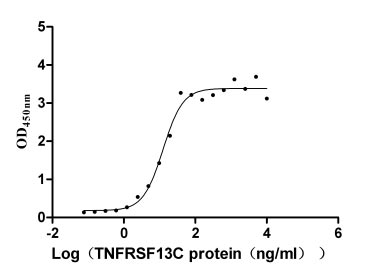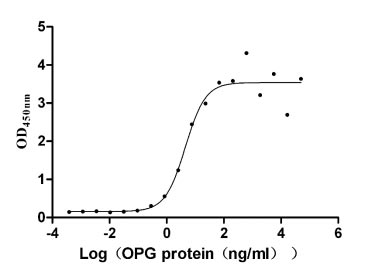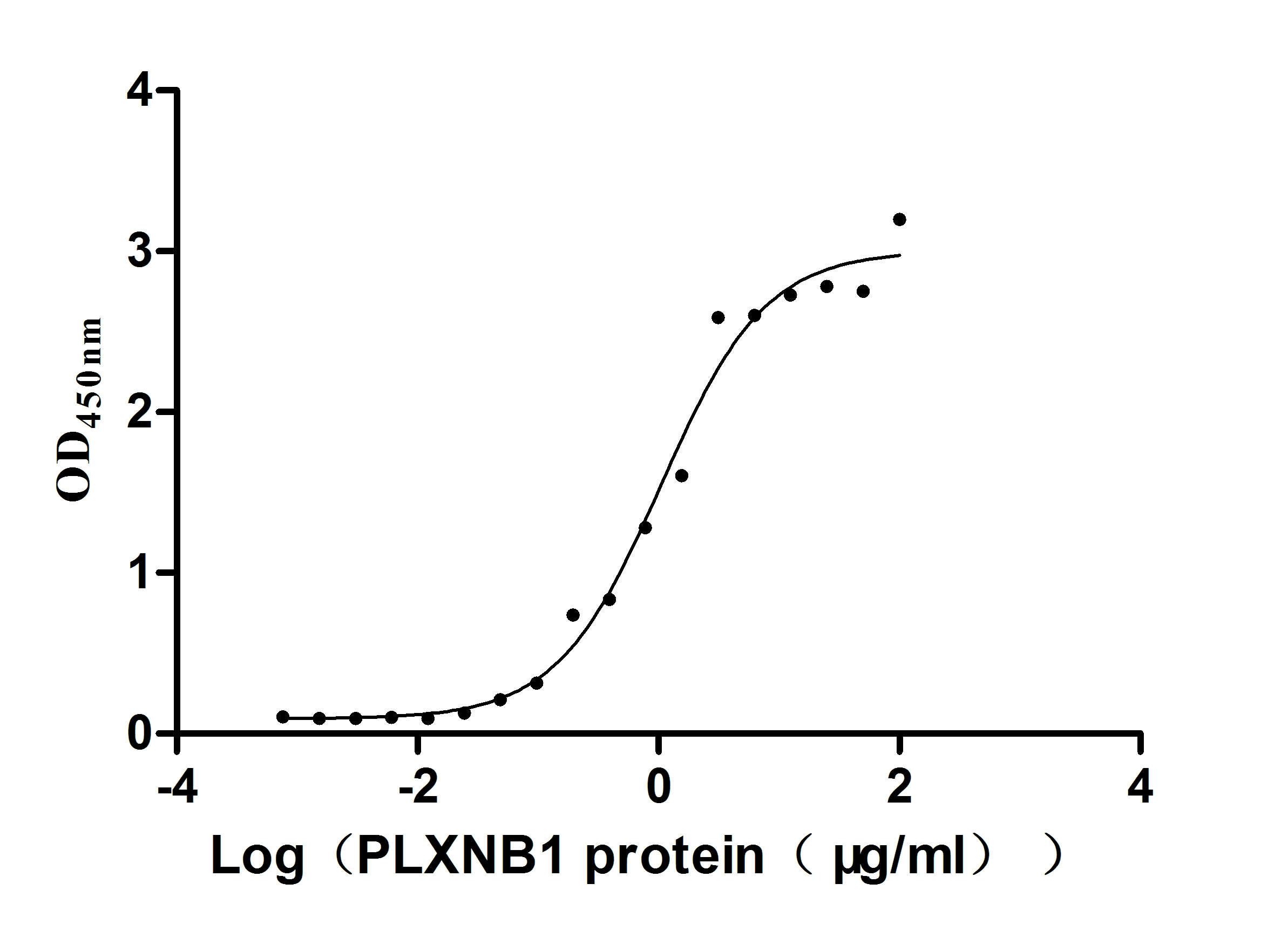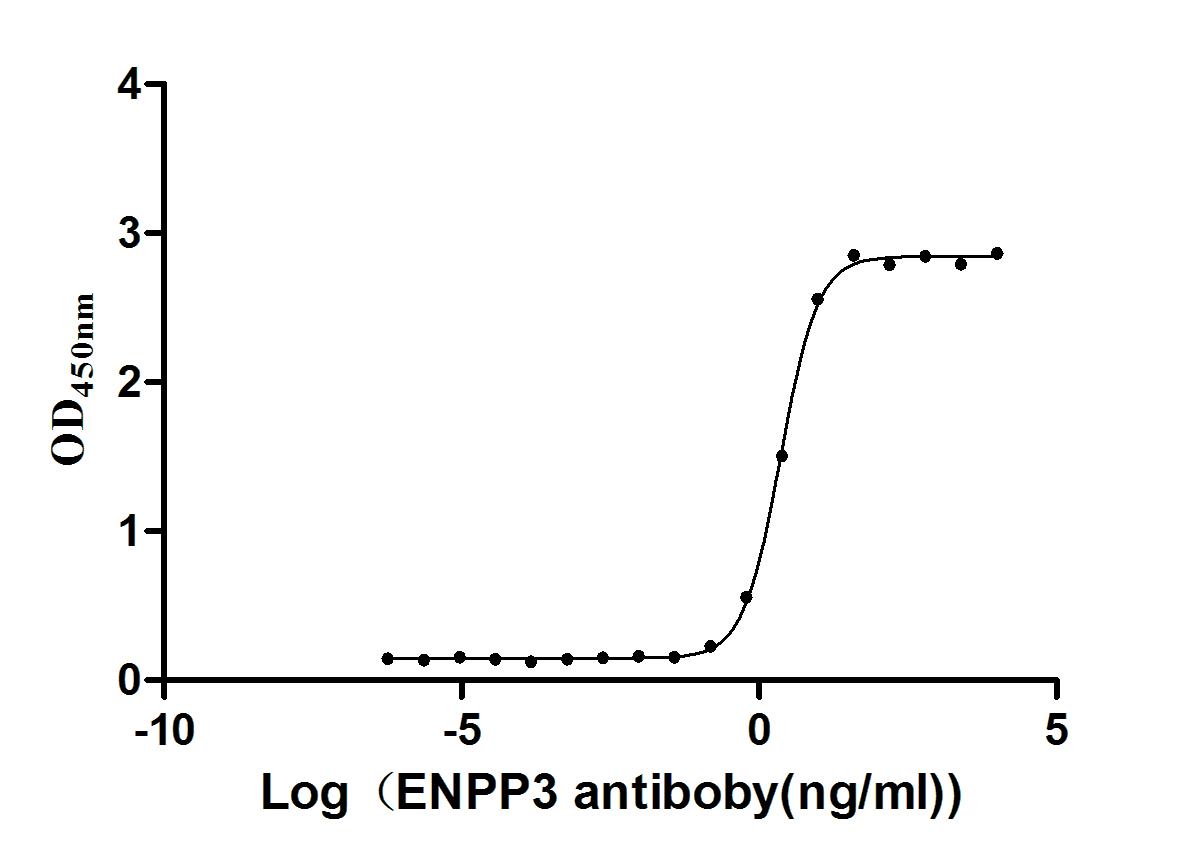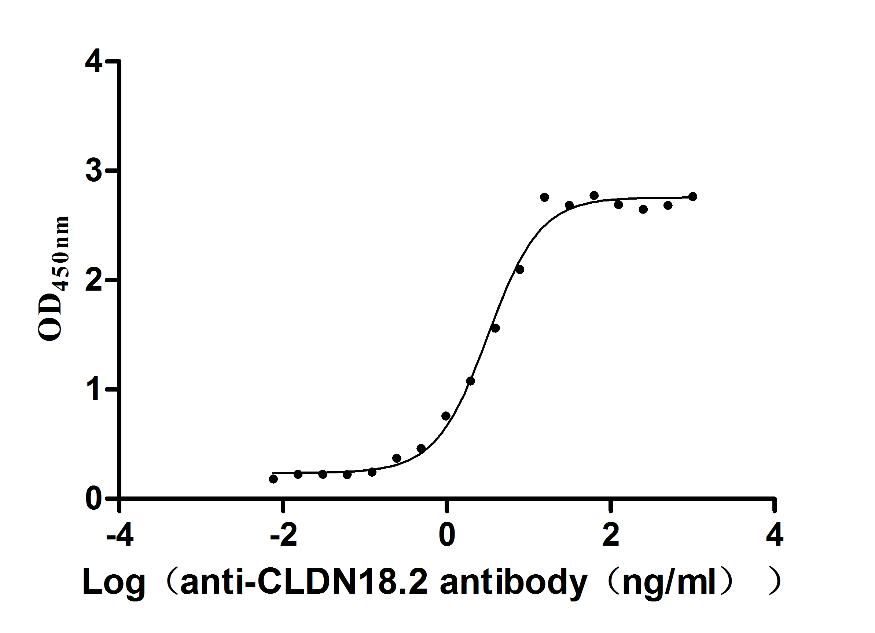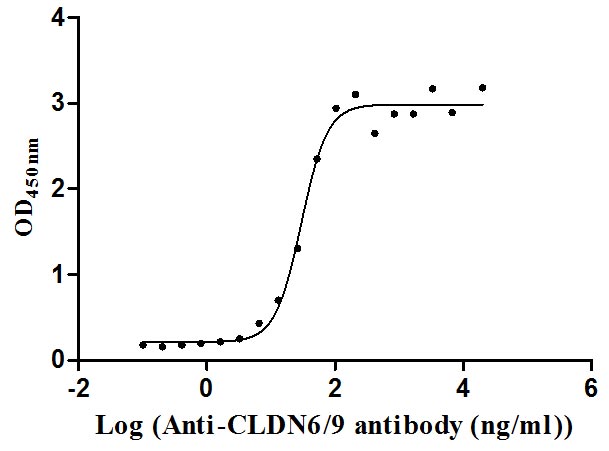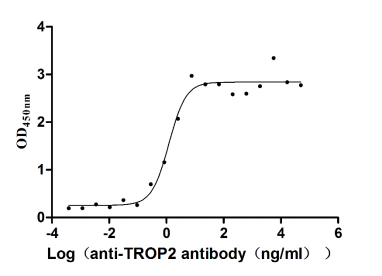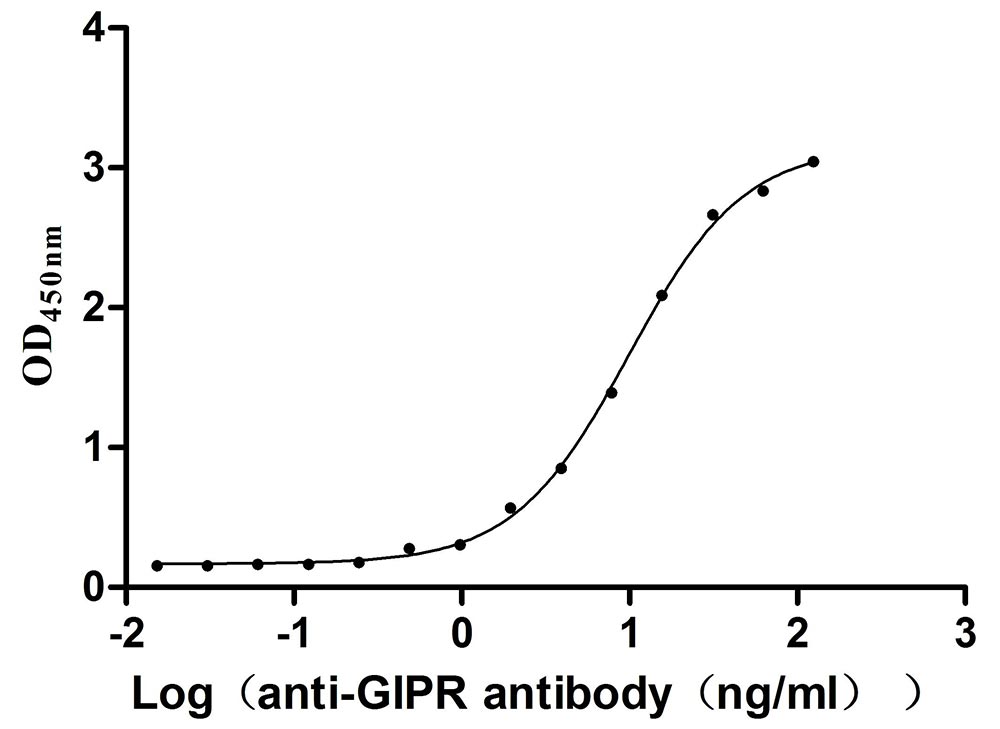Recombinant Mouse Calcium-activated chloride channel regulator 1 (Clca1), partial
-
中文名稱:Recombinant Mouse Calcium-activated chloride channel regulator 1(Clca1) ,partial
-
貨號(hào):CSB-YP884022MO
-
規(guī)格:
-
來源:Yeast
-
其他:
-
中文名稱:Recombinant Mouse Calcium-activated chloride channel regulator 1(Clca1) ,partial
-
貨號(hào):CSB-EP884022MO
-
規(guī)格:
-
來源:E.coli
-
其他:
-
中文名稱:Recombinant Mouse Calcium-activated chloride channel regulator 1(Clca1) ,partial
-
貨號(hào):CSB-EP884022MO-B
-
規(guī)格:
-
來源:E.coli
-
共軛:Avi-tag Biotinylated
E. coli biotin ligase (BirA) is highly specific in covalently attaching biotin to the 15 amino acid AviTag peptide. This recombinant protein was biotinylated in vivo by AviTag-BirA technology, which method is BriA catalyzes amide linkage between the biotin and the specific lysine of the AviTag.
-
其他:
-
中文名稱:Recombinant Mouse Calcium-activated chloride channel regulator 1(Clca1) ,partial
-
貨號(hào):CSB-BP884022MO
-
規(guī)格:
-
來源:Baculovirus
-
其他:
-
中文名稱:Recombinant Mouse Calcium-activated chloride channel regulator 1(Clca1) ,partial
-
貨號(hào):CSB-MP884022MO
-
規(guī)格:
-
來源:Mammalian cell
-
其他:
產(chǎn)品詳情
-
純度:>85% (SDS-PAGE)
-
基因名:Clca1
-
Uniprot No.:
-
別名:Clca1; Clca3; Gob5Calcium-activated chloride channel regulator 1; EC 3.4.-.-; Calcium-activated chloride channel family member 3; mCLCA3; Protein gob-5
-
種屬:Mus musculus (Mouse)
-
蛋白長(zhǎng)度:Partial
-
蛋白標(biāo)簽:Tag?type?will?be?determined?during?the?manufacturing?process.
The tag type will be determined during production process. If you have specified tag type, please tell us and we will develop the specified tag preferentially. -
產(chǎn)品提供形式:Lyophilized powder
Note: We will preferentially ship the format that we have in stock, however, if you have any special requirement for the format, please remark your requirement when placing the order, we will prepare according to your demand. -
復(fù)溶:We recommend that this vial be briefly centrifuged prior to opening to bring the contents to the bottom. Please reconstitute protein in deionized sterile water to a concentration of 0.1-1.0 mg/mL.We recommend to add 5-50% of glycerol (final concentration) and aliquot for long-term storage at -20℃/-80℃. Our default final concentration of glycerol is 50%. Customers could use it as reference.
-
儲(chǔ)存條件:Store at -20°C/-80°C upon receipt, aliquoting is necessary for mutiple use. Avoid repeated freeze-thaw cycles.
-
保質(zhì)期:The shelf life is related to many factors, storage state, buffer ingredients, storage temperature and the stability of the protein itself.
Generally, the shelf life of liquid form is 6 months at -20°C/-80°C. The shelf life of lyophilized form is 12 months at -20°C/-80°C. -
貨期:Delivery time may differ from different purchasing way or location, please kindly consult your local distributors for specific delivery time.Note: All of our proteins are default shipped with normal blue ice packs, if you request to ship with dry ice, please communicate with us in advance and extra fees will be charged.
-
注意事項(xiàng):Repeated freezing and thawing is not recommended. Store working aliquots at 4°C for up to one week.
-
Datasheet :Please contact us to get it.
靶點(diǎn)詳情
-
功能:May be involved in mediating calcium-activated chloride conductance. May play critical roles in goblet cell metaplasia, mucus hypersecretion, cystic fibrosis and AHR. May be involved in the regulation of mucus production and/or secretion by goblet cells. Involved in the regulation of tissue inflammation in the innate immune response. May play a role as a tumor suppressor. Induces MUC5AC.
-
基因功能參考文獻(xiàn):
- Results suggest that CLCA1 is involved in intestinal mucus homeostasis by facilitating processing and removal of mucus to prevent stagnation. PMID: 29885864
- The data underscore and specify the role of mouse CLCA1 in inflammatory airway disease to activate airway macrophages. PMID: 29610986
- These findings demonstrate that 10.1.1 Ab rapidly and specifically induces proliferation and growth of Lymph Node lymphatic sinuses and stroma, suggesting a key role of mCLCA1 in coordinating Lymph Node remodeling during immune responses. PMID: 27224029
- Clca1 is not required for mucus synthesis, structure and barrier function in the murine colon. PMID: 26162072
- mCLCA3 appears to modulate leukocyte response via IL-17 and murine CXCL-8 homologs in acute Staphylococcus aureus pneumonia which is well in line with the proposed function of hCLCA1 as a signaling molecule acting on alveolar macrophages. PMID: 25033194
- Findings suggest that increased expression of a single-gene, mCLCA3, could simulate an asthma attack, and its mechanism may involve mCLCA3 overexpression up-regulating IL-13 expression. PMID: 24033950
- PA-LPS-induced MUC5AC and Clca3 expression is partly through Duox1 PMID: 23691121
- these findings argue against a role of mCLCA3 in Ca(2 )-activated Cl(-) channel-mediated Cl(-) secretion in murine respiratory epithelia PMID: 22362387
- Here, we have characterized the cleavage and autoproteolytic activity of the murine model protein mCLCA3 PMID: 22080371
- Mclca3 mRNA was positively expressed in airway epithelium of asthmatic murine models with airway inflammationbut but was negatively expressed in control group. negatively expressed in control group (Figure 2). PMID: 20819519
- a functional link between two distinct anion currents, ClC-3 and swelling-activated chloride current PMID: 20479003
- Niflumic acid treatment during natural antigen-exposure, where mCLCA3 is greatly up-regulated in the lung, significantly reduces airway inflammation, goblet cell metaplasia and mucus overproduction in vivo. PMID: 12568493
- conclude that hCLCA1 and mCLCA3 are non-integral membrane proteins and therefore cannot be chloride channels in their own right PMID: 15919655
- Gob-5 expression is not essential for mucin overproduction in vitro or in murine models of allergic asthma PMID: 15947424
- We found that mClCA3 expression was significantly decreased in the colon and lung of the cftr-/- mice. PMID: 16099848
- demonstrated accumulation of mucus and increased mClca3 protein in the bronchiolar epithelium of asbestos-exposed mice at all time points but peaking at 9 days PMID: 16251409
- These observations reinforce findings that associate Gob-5 with goblet cell hyperplasia and mucus production in the allergic immune response, but also implicate Gob-5 in the regulation of tissue inflammation in the innate immune response. PMID: 16645179
- Primary 110-kDa translation product in the endoplasmic reticulum cleaves into a 75-kDa amino-terminal and a 35-kDa carboxyl-terminal protein that are glycosylated and remain physically associated with each other but cannot form a channel on their own. PMID: 16895902
- ClC-3 is not detectable on large dense-core vesicles of endocrine cells, but localizes to endosomes and synaptic-like microvesicles in both adrenal chromaffin and pancreatic beta cells. PMID: 18923035
顯示更多
收起更多
-
亞細(xì)胞定位:Secreted, extracellular space. Note=The 75 kDa N-terminal and a 35 kDa C-terminal products are fully secreted into extracellular environment as a soluble complex of two glycoproteins.
-
蛋白家族:CLCR family
-
組織特異性:Exclusively expressed in the digestive and respiratory tracts and in the uterus (at protein level). Expressed in small intestine, colon, stomach, and uterus and slightly expressed in trachea tissue. Exclusively expressed in the mucin granule membranes of
-
數(shù)據(jù)庫(kù)鏈接:
Most popular with customers
-
Express system: Mammalian cell
Species: Homo sapiens (Human)
-
Recombinant Human Tumor necrosis factor receptor superfamily member 11B (TNFRSF11B) (Active)
Express system: Mammalian cell
Species: Homo sapiens (Human)
-
Recombinant Human Plexin-B1 (PLXNB1), partial (Active)
Express system: Mammalian cell
Species: Homo sapiens (Human)
-
Express system: Mammalian cell
Species: Homo sapiens (Human)
-
Recombinant Macaca fascicularis Claudin 18.2 (CLDN18.2)-VLPs (Active)
Express system: Mammalian cell
Species: Macaca fascicularis (Crab-eating macaque) (Cynomolgus monkey)
-
Recombinant Human Claudin-9 (CLDN9)-VLPs (Active)
Express system: Mammalian cell
Species: Homo sapiens (Human)
-
Recombinant Human Tumor-associated calcium signal transducer 2 (TACSTD2), partial (Active)
Express system: Mammalian cell
Species: Homo sapiens (Human)
-
Recombinant Mouse Gastric inhibitory polypeptide receptor (Gipr), partial (Active)
Express system: Mammalian cell
Species: Mus musculus (Mouse)


